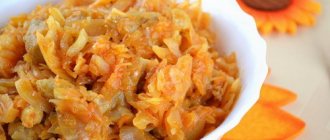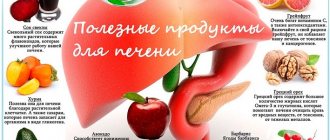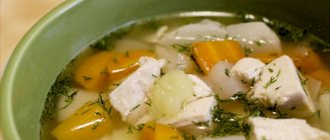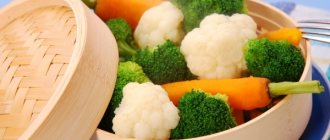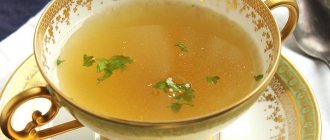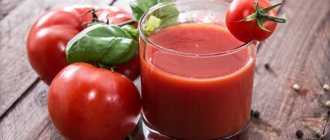Pancreatitis is an inflammatory disease of the pancreas. This organ plays an important role in the digestive and hormonal processes of our body. Normally, pancreatic enzymes are released into the duodenum. With pancreatitis, this does not happen, so, in essence, the organ begins to digest itself. This affects the functioning of the entire body, since enzymes and the resulting toxins are absorbed into the blood, destroying other organs.
The slightest negative impact can worsen the situation and transfer the disease from the remission stage to the exacerbation phase. Diet plays a big role in the healing process. Patients with pancreatitis must clearly understand for themselves which foods they are allowed to consume and which ones are strictly prohibited. Vegetables are a part of various diets as they are rich in many nutrients.
But not all vegetables are equally beneficial for all diseases. With pancreatitis, many products of plant origin are prohibited. White cabbage belongs to the category of those vegetables that are undesirable to eat during the acute period of pancreatitis. However, this vegetable can be consumed in small quantities after cooking during the period of remission.
What can you say about sauerkraut? Experts say that it is much healthier than fresh. Thanks to the fermentation process, the product is enriched with ascorbic acid. In addition, it preserves other vitamins and minerals. Microorganisms that participate in the fermentation process and the resulting organic acids have a positive effect on the state of the intestinal microflora.
Pathogenic bacteria are suppressed and beneficial microorganisms actively multiply. Despite the unconditional benefits, sauerkraut for pancreatitis is not recommended for consumption during the acute period. Why? Let's look at the answer to this question in our article.
Product properties
Sour cabbage is healthier than raw white cabbage. This is directly related to the ripening process, during which the product is enriched with large amounts of vitamins. At the same time, all beneficial properties are preserved. Also, during ripening, bacteria multiply in the vegetable, which have a beneficial effect on the intestinal microflora, and organic acids that can prevent the proliferation of pathogenic microorganisms.
Such a positive effect on the human body is possible only if there is absolute health. Sauerkraut can have a negative effect in case of pancreatitis, so it is recommended to include this product in the diet in other forms, for example, stewed or in the form of a casserole.
Beneficial features
First, let's talk about the positive aspects of mowing substances:
- enrichment with vitamin C;
- vitamins are not lost during the cooking process;
- microorganisms have a beneficial effect on intestinal function;
- eliminating harmful bacteria.
White cabbage is a dietary and low-calorie product. It contains tartronic acid, which prevents the accumulation of fat in the body. It also contains a huge amount of amino acids that bind and dissolve foreign proteins.
Attention! Sauerkraut contains more useful substances than fresh vegetables.
Cabbage contains ascorbic acid, B vitamins, iron, copper, zinc, magnesium and much more. The vegetable contains a rare substance, vitamin U. It prevents the development of stomach ulcers. The dietary fiber included in the composition normalizes stool and intestinal microflora. Phytoncides have immunomodulatory properties, making the body resistant to various types of irritants.
In general, sauerkraut is useful for hangovers, colds, and gastrointestinal diseases. It is effectively used in dietetics and cosmetology
This dish contains a large amount of iodine. It also contains lactic acid, which helps inactivate pathogenic bacteria. It is believed that consuming this vegetable reduces the level of bad cholesterol and the risk of developing tumors. In addition, fermented substances improve blood circulation, strengthen bones, eliminate inflammatory processes, stimulate the immune system, normalize the condition of the skin and the functioning of the visual apparatus.
Sauerkraut contains almost all the vitamins necessary for our health. Although processed foods lose their valuable properties, this does not apply to sauerkraut. During the fermentation process, the vegetable is enriched with new vitamins and valuable substances, which can be preserved for ten months after preparation.
Important! It is not necessary to finely chop the cabbage. It is believed that the larger you cut a vegetable, the more beneficial substances will remain in it.
Potential Harm
Sauerkraut is prohibited for consumption during pancreatitis (or practically prohibited). Exceptions are possible, but provided that the product is used in small quantities. Such restrictions are due to the following product properties:
- increased acidity, which can provoke an inflammatory process in the mucous membrane of the digestive tract;
- an abundance of salt, which leads to swelling of the pancreas tissue;
- coarse fiber, of which there is a large amount in the vegetable, stimulates the intestines, which provokes an increase in pain or its appearance.
It is for these reasons that consuming an acidic product with diagnosed pancreatitis is undesirable.
Sauerkraut: classic recipe
Knowing that a person has pancreatitis, you can prepare a vegetable according to a special recipe, for example, you need to reduce the amount of salt and exclude any spices from the dish. The classic recipe is:
- Wash 1 kg of cabbage, remove the top leaves, and then finely chop.
- Wash, peel and grate 2 large carrots.
- Mix vegetables, grind with 1 tbsp. l. salt, then place in a three-liter jar, compacting thoroughly.
- Pour warm boiled water into the jar.
- Place the container in a warm place for a week. After this time, the dish is considered ready to eat.
Proper use of sauerkraut for pancreatitis
Cabbage fermented with salt and sugar cannot be classified as a dietary product; moreover, it has some contraindications for consumption, including pancreatitis. But in the absence of a complicated disease and permission from a doctor, as well as if the rules of use are followed, the product can be occasionally included in the diet. The following recommendations must be followed:
- Before consuming sauerkraut, be sure to rinse it under running water. This will remove excess salt.
- Heat treatment will help improve the digestion of the product. You can cook cabbage soup or stew it.
- A single serving should not exceed 100 g.
- It is not recommended to eat sauerkraut if you have pancreatitis more than once a week.
- You need to carefully monitor the condition, and if any unpleasant symptoms appear, it is better to discard the product immediately.
The benefits of ripening agents
Let's take a look at what specific beneficial properties the dish has:
- enriched with vitamin C during the cooking process;
- ripening does not remove the nutrients contained before cooking;
- microorganisms involved in fermentation create microflora that have a beneficial effect on the intestines;
- microorganisms eliminate the growth of harmful bacteria, leaving an abundance of beneficial ones.
The benefits are undeniable, but whether it is allowed to eat sauerkraut with pancreatitis is of interest to gourmets and lovers of crunchy dishes. In the stage of stable remission, eating is a possible scenario, otherwise the answer is negative.
Before introducing sauerkraut into the menu, it is better to add the vegetable to the diet in cooking - stewed or added to cabbage soup. If the body accepts the food normally, the doctor’s advice to continue the experiment will not hurt. You should add the dish to your diet once a week, no more than a tablespoon.
It is important to pay attention to the body's reaction. If unsatisfactory, it is better to forget about the dish, or take it little by little, occasionally adding it to the menu.
Sauerkraut juice
Unlike sour cabbage itself, its juice has a beneficial effect on the functioning of the pancreas. The fact is that this product contains a natural substance that is used in the drug “Pancreatin”. In addition, the juice has other beneficial properties:
- normalizes stomach function;
- prevents constipation;
- reduces cholesterol levels;
- prevents the formation of gallstones;
- promotes rejuvenation of the body;
- cleanses the body of toxins.
Such properties are due to the presence of iodine, sulfur, and chlorine in the composition. It is these microelements that have a beneficial effect on the mucous membrane of the digestive tract.
You can get healthy juice in the following way: to do this, you need to squeeze out the sauerkraut and strain the brine.
Despite the fact that this product has a large number of beneficial properties and is approved for use by people with pancreatitis, it can only be drunk with a doctor's permission. Uncontrolled consumption of sauerkraut juice during pancreatitis (whether or not you can drink the juice and eat the vegetable itself, only a doctor will say) can lead to the development of complications of the disease.
What types are allowed for consumption?
Nutritionists say that with pancreatitis, you can include other types of vegetables in your diet. Such patients can eat cabbage:
- Colored. It has a delicate fiber structure, less fiber, and therefore does not irritate the digestive tract of a patient with pancreatitis. It is recommended to boil or simmer for a short time. Cauliflower can normalize acidity, eliminate constipation, and remove toxins and waste from the body.
- Brussels. Its chemical composition is very similar to that of white cabbage, but it does not have such a strong irritating effect on the stomach and pancreas. Including this vegetable in the diet of a patient with pancreatitis can strengthen the immune system, normalize the digestion process, and improve the functioning of the cardiovascular system.
- Beijing. It is characterized by the presence of a large amount of fiber, so during an exacerbation of the disease it should not be in the diet of a person with pancreatitis. The very structure of the fibers of Chinese cabbage is more delicate than that of white cabbage, so during the period of remission it can be used in stewed form.
- Broccoli. It also has a positive effect on the functioning of the pancreas. Puree from this product can act as a dietary supplement to other dishes on the menu.
Cabbage during an exacerbation
The pancreas can react sharply to any deviations in dietary intake. As a rule, the manifestation of such a reaction is increased pain, the appearance of vomiting and diarrhea, the development of a fever, bloating and other symptoms (depending on the severity of the disease and individual characteristics). That is why in the acute phase all these symptoms can be aggravated by poor nutrition. This also applies to stewed sauerkraut (if you have pancreatitis, it’s better to be careful not to include it in your diet). This prohibition is associated with the presence of:
- essential oils (they are responsible for the pungent taste);
- a large amount of coarse fiber - 100 g of white cabbage contains 2 g.
Broccoli
Eating broccoli for pancreatitis depends on the patient's response. For example, in some patients the variety causes colic, bloating, etc. during the acute phase. Try grating or boiling broccoli, making soup, salad, stew, pudding or puree. If the body accepts the dish normally, you can leave the product in the diet. If you fail, it is better to wait for the remission stage, when broccoli is “officially” allowed. When remission occurs, it is permissible to stew broccoli and eat it raw.
Product during remission
Chronic pancreatitis is characterized by alternating phases of exacerbation and remission, during which the inflammatory process subsides and unpleasant symptoms disappear. If the dietary menu during an exacerbation of the disease is very strict, and any deviations worsen the quality of life, then during the period of remission the diet can be expanded. This includes adding foods such as sauerkraut. But you should not do this immediately after the symptoms have eased.
It is better to first try other dishes, during the preparation of which the vegetable is subjected to heat treatment, which significantly softens its fibers. If after this no negative reactions appear, then you can try to include sauerkraut in your diet (sour cabbage and with a lot of salt will not work) in small quantities. At the same time, you need to monitor your health, since this product can cause another exacerbation.
If you decide to try this dish at a party, then you should ask the hosts whether the sauerkraut is washed before serving.
When patients are diagnosed with pancreatogenic diabetes, all nutritional recommendations remain the same. The fact is that this vegetable contains a small amount of sucrose and starch, which in no way can affect blood sugar levels.
Pancreatitis is inflammation of the pancreas. This disease is accompanied by many unpleasant symptoms. To reduce their manifestation, you need to follow a diet, one of the rules of which is to sharply limit sauerkraut in the diet. But in the absence of complications during the period of remission, it is allowed to use this product in small quantities.
Red cabbage
The red cabbage variety is not so popular, but the disease forces a person to look for new taste sensations that are positively perceived by the body. Red cabbage - is it allowed to eat a vegetable if you have inflammation of the pancreas? Definitely, the variety is considered safe, including broccoli, kohlrabi and other Chinese varieties of vegetables. It is allowed to add red leaves to food carefully.
Heads of cabbage should be consumed after heat treatment - especially on days of exacerbation. It is recommended to boil, steam, or bake the dish.

